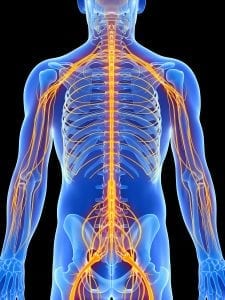On March 20, 2025, we will stop accepting new Military Disability Made Easy subscriptions. For more information about how this change may impact your subscription, click here
How to Rate Conditions that aren’t in the VASRD
- Published:
- Last Updated: October 4, 2022

Analogous Ratings are by far the most complicated area of rating conditions for Military Disability. I’ve blogged on this topic before, but I want to go a little more in depth because of how common and how important analogous ratings are.
So what is an analogous rating?
When the lawyers and doctors got together to create the VASRD, the regulation that determines exactly how conditions are rated, they realized that they had a literally impossible task. How was this group supposed to provide rating criteria for every single condition that a person could possibly get? There are hundreds of thousands, if not millions, of different ways in which the body can malfunction. To cover every single condition, the group would have needed many years and lots of coffee. Plus, the resulting VASRD would have been so massive and hard to use that it would have made the rating process even more complicated and lengthy.
Their solution to this epic conundrum was analogous ratings.
The Analogous Rating Principle basically states that a condition that is not included in the VASRD is to be rated “under a closely related disease or injury” that isin the VASRD. Basically, the condition should be rated under the condition in the VASRD that is as close to the actual condition as possible. While this seems simple, it can get pretty complicated in some cases, especially when there are numerous possible options to choose from.
There are a few important key ideas to consider when choosing the appropriate analogous code to rate a condition under. Try making a list as you answer these questions:
- First, which conditions in the VASRD affect the same body functions as the original condition?
- Second, which conditions in the VASRD have the same symptoms as the original condition?
- Third, which conditions in the VASRD are caused by the same things as the original condition?
- Finally, which conditions in the VASRD require the same treatments as the original condition?
Anytime all three of these questions are easily answered by the same condition, the best analogous rating option should be obvious. Rarely, however, will all three questions be answered by the same condition. In these instances, best judgment must be used to determine which of the optional conditions is closest or best defines the overall disability of the original condition.
There are no right or wrong answers when it comes to analogous ratings. There are simply bad options, good options, and better options.
We’ve provided a list of the most common analogous ratings for many conditions on our Analogous and Equivalent Codespage. This list is simply the most commonly used option for a condition, not the ONLY option.
The Rating Authorities, who make the actual rating decisions, have the right to choose whatever analogous code they think best fits a condition. While they are supposed to follow the principles I’ve outlined, they have the authority to choose anything they want as long as the choice can be logically supported. Because of this, it’s impossible to predict exactly what analogous code the Rating Authorities will ultimately choose for a condition. We can probably come up with a very likely option, but ultimately, the choice is up to them.
Let’s walk through a simple example to better see how to apply the principles of choosing an analogous code discussed thus far.
Beth has chronic renal failure, a condition that is not in the VASRD. Her chronic renal failure was caused by exposure to a chemical and makes it so that her kidneys don’t filter her blood properly. Let’s answer the questions in order.
The first question, which conditions affect the same body function (in this case, the functioning of the kidney), would lead you to our list of Kidney Conditions that are in the VASRD.
Question 2: Which conditions have the same symptoms? Any condition that also causes the kidney to not filter blood properly will cause the same type of symptoms. Of the Kidney Conditions, nephritis, interstitial nephritis, nephrosclerosis, toxic nephropathy, glomerulonephritis, and renal amyloid disease all affect the kidney’s ability to filter blood.
Question 3: Which conditions have the same cause? This question allows us to weed out all but one of the conditions on the list. Since Beth’s condition was caused by chemical exposure, then toxic nephropathy becomes the only remaining option. (It looks like we have our analogous code, but let’s answer question 4, just to be thorough.)
Question 4: Which conditions require the same treatments? All conditions that affect the kidney’s ability to filter the blood will be treated very similarly, so this question in this case doesn’t really factor in. Toxic nephropathy is still the best option.
So, Beth’s chronic renal failure will be rated analogously as toxic nephropathy, code 7535. Note that this is a different code than the most common analogous code for chronic renal failure that we have listed on our Analogous and Equivalent Codes page. While nephritis is the most common condition to rate chronic renal failure under, in Beth’s case, because of her exposure to a chemical, the best code for her condition is toxic nephropathy.
Believe it or not, Beth’s case was fairly straightforward. Let’s walk through another example that is a bit more complicated.
Bob has artery stenosis, a condition where an artery narrows, limiting or blocking the flow of blood through that artery. Bob’s stenosis is located in his vertebral arteries that lead from the heart to the brain. Let’s start with the questions:
Question 1: Which conditions in the VASRD affect the same body functions?
This is by far the most vital question for rating artery stenosis. Your first reaction might be, “It’s artery stenosis, so it would be rated on a code for the arteries. On The Arteries and Veins page, there is a section for Blood Flow Restrictions and Blocks. Stenosis blocks the flow of blood, so it must be rated on one of the codes in this section.”
If you did think this, you’re reasoning is quite logical. But upon closer inspection, you might find that the four codes in this section are mostly for blood flow restrictions to the arms and legs, and that none have anything to do with the brain.
Question 2: Which conditions in the VASRD have the same symptoms?
Already, all of the conditions on our list are ruled out. None of the conditions in the Blood Flow Restrictions and Blocks section will have the same symptoms as blood flow restriction to the brain. What now?
Let’s think a bit more about the symptoms that would be caused by restricted blood flow to the brain. It’s really the brain, not the arteries, that will ultimately be affected by this condition. Less blood in the brain will ultimately lead to brain damage. So, since we haven’t found an artery code that would work, let’s head over to the Conditions of the Brain section on the Central Nervous System page to see if we can find any brain conditions that would be similar to Bob’s vertebral artery stenosis.
Question 3: Which conditions in the VASRD are caused by the same things as the original condition?
We are now ready to compare the brain conditions to Bob’s blood flow condition. If we read through all the different options here, we find that there are two conditions that deal directly with blood flow to the brain: Embolism of the blood vessels in the brain, and thrombosis of the blood vessels in the brain.
In both cases, the limited blood flow is caused by blood clots, not the case with Bob’s stenosis. However, the fact that the blood flow is limited to the brain, causing the same types of symptoms in all the conditions, makes the exact cause of the restricted blood flow unimportant.
We are now down to two possible analogous codes. In this case, it could easily be rated on either one, and it wouldn’t make a single difference, especially since the rating criteria is the same for both. The most commonly used code would be thrombosis of the blood vessels, code 8008, since this doesn’t include a traveling blood clot, but it really doesn’t matter in this instance. Either code would give Bob a fair rating.
Question 4: Which conditions in the VASRD require the same treatments?
This question is again not a factor in this case. Treatments are important only in certain situations. For example, if someone has a respiratory condition that is not asthma, but requires the use of an inhaler, then it could be rated as asthma since both require the same treatment. Treatments are the least important of the four questions in the majority of cases, but are always considered just in case it offers a better rating option.
Hopefully, I’ve given a better idea of how analogous codes are applied to conditions that are not included in the VASRD. It can definitely get complicated, especially with the more complex and rare conditions, but the system allows the flexibility necessary to provide fair ratings for all conditions, which is the ultimate goal.
Check out our Analogous and Equivalent Codes page for a list of the most common analogous codes. Remember, that these are not the only options for these conditions, just the most commonly used ones. The final choice is always up to the Rating Authorities.
Recent Posts
TDRL vs. PDRL—Which is better for disability benefits?
February 13, 2025
Leukemias and Multiple Myelomas NOW on the Presumptive List
January 9, 2025
Two MORE Conditions added to the Burn Pit Presumptive List
January 3, 2025
The 2025 VA Disability Rates are here!
December 2, 2024
About Us










14 Comments
Would a Spinal Cord Stimulator be rated as a condition or a treatment? I can't find anyone who has dealt with this before.
That's a good question. Really, it's a treatment. What is your diagnosed spinal condition? The condition causing the pain that is being treated by the stimulator is what would be ratable.
You should receive three ratings: one for the lumbar spine, and one each for the radiculopathy.
This site is great. I'm really appreciating all of the info on here as I get ready for my C&P exams this week. I was treated for Olfactory Neuroblastoma (a rare cancer that originates in the olfactory nerve area) last year. I had two craniotomies last year and most of my sinuses were removed in the process. Since then I've had chronic "sinus infections" for lack of a better word since most of my sinuses were removed. I don't think it really meets the criteria of chronic sinusitis since the infections are in the open space that used to be my sinuses. I have to do daily sinus flushes in order to breathe. Would this fall in to the analogous code criteria? Thanks for sharing this info.
Even though you it's technically not sinusitis, that is definitely the closest condition, and so it would be rated analogously under code 6510.
http://www.militarydisabilitymadeeasy.com/therespiratorysystem.html#f
After reading your post, this is by far the best site I've seen and encounter. I have a question for you. I have a left labrum tear, Achilles heels issue (being schedule for surgery), and a left knee pain (due to 3 surgery on my right knee). By filling a claim which would be seen as a treatment and which will be conditions?
Surgeries aren't rated, just the condition and the results of the surgery. On your claim, just list your definitive diagnoses that can be found in your medical records: left labrum tear is a diagnosis, but "achilles heels issues" isn't. Whatever has been officially diagnosed as the issue for the achilles heel should be noted.
What is the proper rating(s) for spinal fusion of three vertebrae (C5,C6 & C7) This was caused by herniated disks. I also suffered from radiculopathy. what ratings should be considered? THank you in advance
Your fusions would be given a single cervical spine rating under code 5241 based on the remaining range of motion of your cervical spine. Without knowing your range of motion measurements, I can't tell you what the rating would be, but you can find it here:
http://www.militarydisabilitymadeeasy.com/thespine.html#form
Radiculopathy can be rated separately under the code for the nerve affected.
http://www.militarydisabilitymadeeasy.com/uppernerves.html
I was diagnosed with CAD. They placed a stent in my Left Anterior Descending artery using a catheter via my right Femoral artery. Am I right to put it under Code:7017. In the conditions list it states: -A coronary artery stent is a tube that is surgically placed in the arteries…..Isn't a catheter also considered surgical?
You are correct. The VA analogously rates coronary artery stents under code 7017.
http://www.militarydisabilitymadeeasy.com/analogous.html
Thank you for your service. Unfortunately, Avascular Necrosis and Bursitis are both not included on the VA Presumptive List for Agent Orange exposure and so cannot be considered service-connected in that fashion. You would have to provide other evidence that they were indeed caused by your service.
http://www.militarydisabilitymadeeasy.com/vapresumptivelist.html#herbicide
http://www.militarydisabilitymadeeasy.com/service-connected.html
I am a Vietnam vet, spent all of my tour in the jungle with the grunts (forward observer). I am currently receiving 60% disability for tinnitus and PTSD. I have recently been diagnosed with Avascular Necrosis of the right and left femur, verified by MRI and X-rays. The MRI also revealed bursitis in the right hip. I believe the AVN problem is due to agent orange exposure, not sure about the bursitis. What rating should I expect?
Thank you for your service. Unfortunately, Avascular Necrosis and Bursitis are both not included on the VA Presumptive List for Agent Orange exposure and so cannot be considered service-connected in that fashion. You would have to provide other evidence that they were indeed caused by your service.
http://www.militarydisabilitymadeeasy.com/vapresumptivelist.html#herbicide
http://www.militarydisabilitymadeeasy.com/service-connected.html